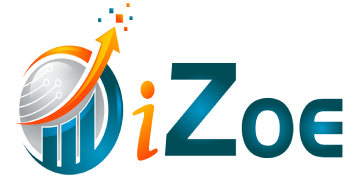As employees have more ways to incur travel expenses than ever, now is the time to rethink your company’s strategy to thrive in changing times. Automating your financial activities can be a crucial part of such a strategic plan, and research shows that small and medium-size businesses see Expense Management Automation as key in their strategy.
A commissioned study conducted by Forrester Consulting on behalf of Concur indicates that nearly two-thirds of the SMB financial leaders surveyed picked “managing expenses/cash flow” as their top financial challenge. The inspection says: “with limited bandwidth, SMB financial leaders observe the need to improve their overall T&E processes in order to enable employees to track expenses more efficiently.”
A Quick Guide to Expense Management Automation
1. Decide which employees are allowed to incur expenses, and what kind of expenses they are
2. Pick an Expense Management Automation function that can provide diverse prepaid cards with individualized spending rules and limits, mobile phone receipt capture, a dashboard and integration with Accounting Systems.
3. Build the dashboard and train the finance team in its use
4. Ask answerable managers to describe the rules for each employee type or department including limits, cash loading, geographical constraints, and allowable expense types
5. Input the new expense profiles
6. Modify relevant spending policies to disclose the new business process to employees
7. Train the finance department and employees, if required
8. Issue the new cards
9. Start receiving and managing real-time spending information
Take a look at these other key figures out to automate expense and travel processes:
Issue Different Types of Card from One System
With automated expense structure, control starts with who is allowed to spend, on what and when. The finance team can set rules and limits for each card that is issued and alter the parameters to ensure appropriate use.
While some cards used by senior staff may have a spending limit, others will be stored value cards that employees can use for smaller purchases. Solutions such as ours even allow for “virtual” procurement cards, enabling authorized users to make online purchases on behalf of the business or organization. Limits and rules can be set for groups of employees, and for individuals.
Errors and Time Management Present Challenges
In a bit more detail, Forrester found that SMBs’ “key [expense and travel] challenges to focus on user-induced errors and long-time requirements.” Smaller businesses (from 1-499 employees) called out the time requirements for paperwork and approvals as their top challenge. That was crucial for bigger businesses in the sample (500-999 employees), but those gave a small edge to the high number of inaccuracies caused by human error.
Size Matters
The businesses surveyed examined improved process abilities to be the most important benefit of Expense Management Automation and travel solutions. This priority is markedly different from Enterprise organizations, which are more likely to emphasize “more accurate reporting…for real-time expense tracking.” The study notes that “SMB organizations have far fewer employees to manage or business departments to accommodate” so that difference makes sense. Since many of them are still using paper to track costs, about two-thirds of the SMBs surveyed are either updating their T&E system now or plan to do so in the near future.
Solutions Need to be User-Friendly
The Forrester study notes that new investments in cost and travel systems only get allowance off if those systems are easy for employees to use. If so, the workers are more likely to buy-in. That involves certain capabilities, including a mobile app so users can acknowledge and accept from anywhere, a way to automate T&E and vendor invoicing from a single solution, and faster reimbursement times to head off employee frustration. The SMBs saw all three of these attributes as improving compliance with rules and policies.
Solutions Need to be Business-Ready
User-friendliness is only half the picture. Forrester found logical assimilation with the HR and finance systems that SMBs already have is critical, and the technology SMBs are thinking about here is the cloud. More than three-quarters of the SMB companies look over either using now or plan to use soon cloud apps. That’s because they can roll out crucial systems faster, like expense, travel, and invoice management. The things that are considered for frameworks to have the option to impact are “accurate reporting through data consolidation and analytics” and “improved visibility into and access to data.”

